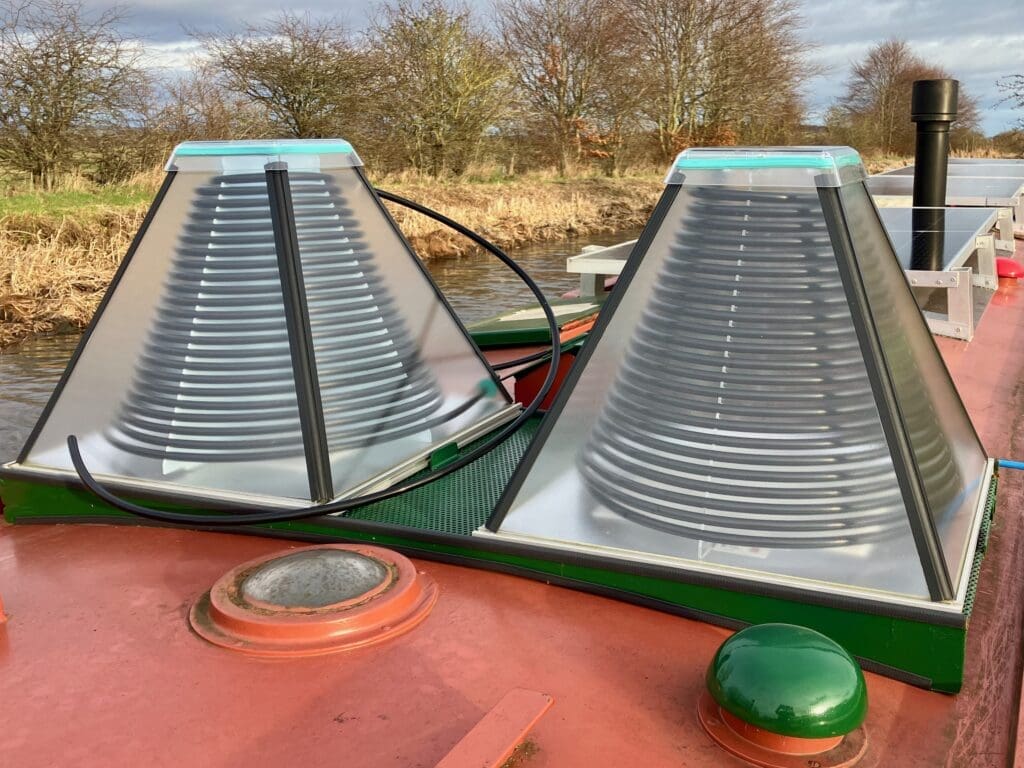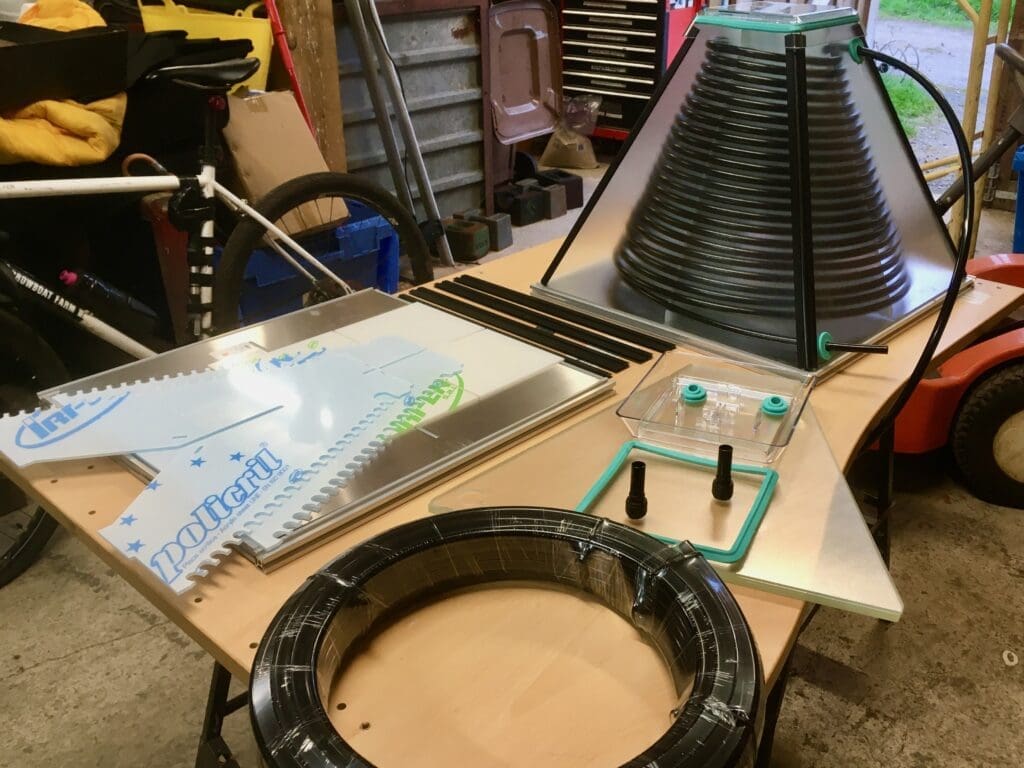What, you might understandably ask, has doing the weekly wash in sub-Saharan Africa got in common with having a hot shower on the UK inland waterways system?
IN both instances, it’s about an affordable form of hot water… in fact, extremely affordable, given that the sun doesn’t send a bill!
SolarisKit is a company established around a simple solar-thermal hot water concept originally designed for Third World countries to provide hot water for washing clothes and people.

It was started by a lecturer from Heriot Watt University of Edinburgh (supported by some of his erstwhile students) who went on to establish a manufacturing base at the Michelin Scotland Innovation Parc in Dundee, where I visited him once I had realised that these HelioPro (as they are now called) units also had potential for providing hot water for inland waterways craft.
Now glorying under the title of ‘prismatic geometry solar collectors,’ these apparently simple units have been subject to numerous small refinements since their invention, but essentially a coil of black, heat absorbent 12mm pipe is coiled up inside a Perspex-glazed pyramid. The more hot water required, the more pyramids are linked together in series.
The heated water is then passed through a boat’s calorifier, via its indirect heating coils, in much the same way as the engine’s cooling water or the heated water from a solid fuel stove. Typically, a boat calorifier has a capacity of about 70 litres and two collectors will ‘power’ a nominal 90-litre vessel.

With a focus on the provision of hot water for the Third World (and no knowledge whatsoever of the UK inland waterways system), it had never occurred to the company, until my visit, that there was possibly a more local, fluvial market. The upshot was that I agreed to trial the device, largely at my own expense, as by then my interest had been more than piqued.
In a former life I had installed domestic solar thermal units, so had more than a passing understanding of the necessary plumbing requirements, which include a pump, pressure vessel, flow reducer, and differential controller.
Leaving aside the first three components for a moment, it is the differential controller that is key to the effective working of the system. Quite simply, it senses the respective temperatures at the collector and the calorifier and ensures that the pump only sends water in that direction when its hotter on the roof than it is at the tank. Otherwise, of course, the entire system could devote itself to heating up the great outdoors.
The pump is necessary because the heat is generated above its final destination, so it won’t thermo-siphon around the system of its own accord and the flow restrictor is adjustable to ensure that heat is sufficiently dissipated into the calorifier water rather than simply racing round the system under the full force of the pump.

One thing my trial has demonstrated is that, in this application on a boat, it is unnecessary to incorporate a pressure vessel, as is usually the case with a domestic system. Even on the hottest days, when water expansion might be at its greatest, pressure in the system rises little above one bar so there is no danger of it exploding!
The original, simple Third Word systems dispensed with all this as the collectors merely sat on the ground and heated a tankful of water above them, raised on a simple structure. Leaks and even bursts were of little consequence as the ‘installation’ was outside. Today, manufacturing focus is on domestic supply to First World properties and consequently the complete kits come with an integral five-bar specification, ensuring plenty of margin for expansion.
At this point, some readers will be sucking on their teeth having come to the realisation that all the heat exchange coils in their calorifiers are already fully occupied, doing duty on behalf of an engine and/or a solid fuel stove. However, all is not lost, as it is possible to install a third coil at the immersion heater boss on the calorifier which still incorporates the electric element and thermostat: www.solarcoil.co.uk/products.html
With trials now almost complete, a subsequent article will focus on my experience and whether HelioPro units have a useful place on a boat. I have tried several different configurations specific to the layout of a typical narrowboat and learned a good deal that is of use along the way. Meanwhile, there is much to be gleaned at: https://solariskit.com/heliopro-solar-water-heater/#intro





